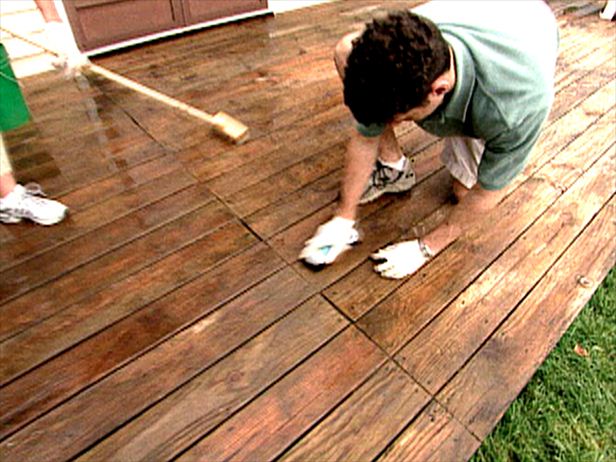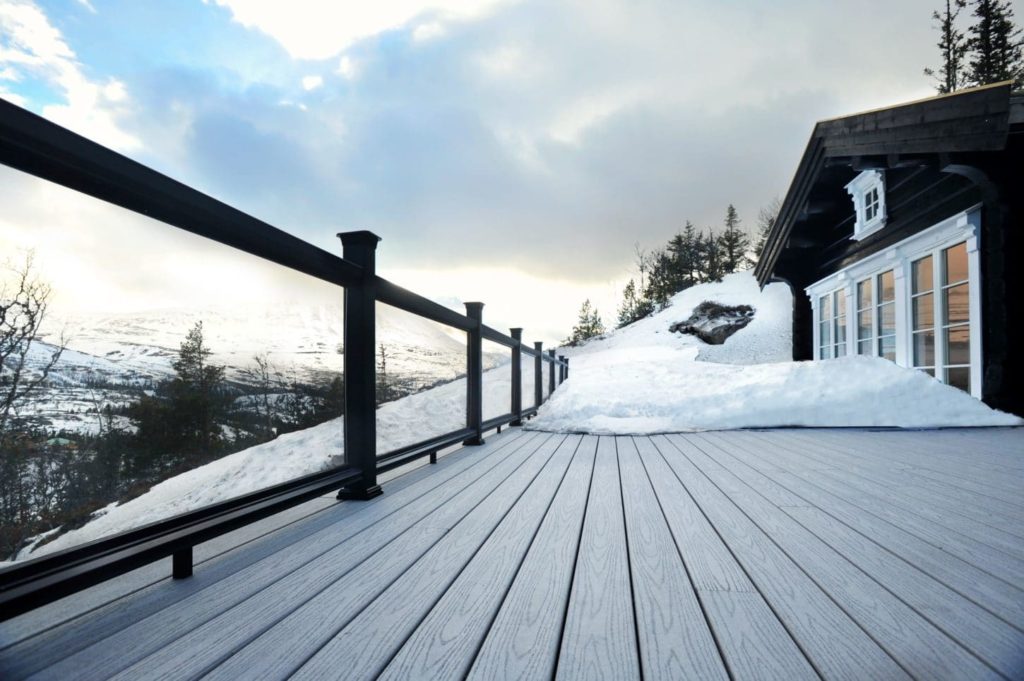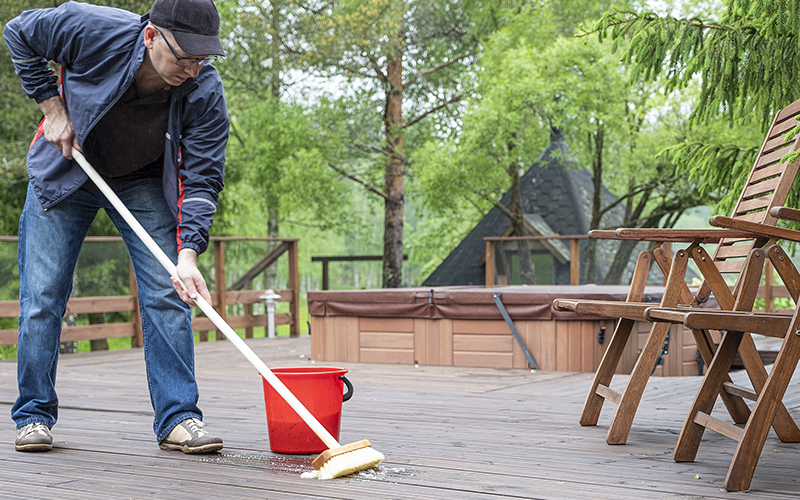Wooden decks provide an outdoor area where you can relax and entertain friends and family. The warm tones of the wood, set against the backdrop of a lush garden will add to the beauty of your property as a whole.
But these decks come with the added responsibility of regular cleaning and maintenance to preserve their looks all year round. Regular cleaning and maintenance is also the best way to protect your investment as, without it, your wooden deck will fall apart pretty quickly.
How To Clean Your Deck

You may have come across advice that says to clean your wooden deck once a year. That’s not bad advice, but the cleaning referred to there is the deep cleaning, exfoliating kind. Otherwise, you should clean the deck regularly, removing dust, debris, and leaves.
If you’re only going to clean once or twice a year, your wooden deck is going to look weathered and distressed. Wood is a natural material that needs to be cared for, especially if you live in areas of high humidity. Cleaning regularly, albeit not intensively, will prevent molding and moss growth, which are two sights you don’t want to see on your wooden deck.
Regular cleaning may mean sweeping with a broom or leaf blower. Use a knife or small chisel to remove any dirt stuck between the deck boards. As you clean, check the deck’s general condition and structural stability so you can repair any damage before it gets worse.
It is good to power-clean once a year. When it comes time for that power clean, here’s what to keep in mind:
Avoid Using Power Washers
Power washers can get the cleaning job done quickly and effectively. But in the hands of an unskilled person, the power washer can stress or damage the wood. If your decking is made out of soft cedar or pine wood, it’s best to avoid power washers.
If you are to use a power washer to clean the deck, make sure to hold the washer’s nozzle at a slight angle and that you follow the direction of the wood grain as you clean. And always keep the nozzle moving.
How To Clean A Deck Without A Power Washer
There are alternatives to power washers that, while not as fast, are just as effective. For one, a garden hose with a hard-stream nozzle will get the cleaning job done nicely.
For areas that are so dirty, you have to scrub, make sure to scrub along the grain of the wood. You can then rinse off with clean water, using a soft broom to sweep off the dirt.
Use Non-Toxic Cleaning Solutions

For wooden decks that are really dirty, you may be tempted to use tough chlorine bleaches in an attempt to lift stains. This is not advisable. While that may remove the stains, it may end up bleaching the wood and damaging its cell structure.
Remember the environment, too. The fog or spray from chlorine-based cleaners may kill plants in your garden. An immaculate deck that sits beside wilting shrubs isn’t a pretty sight.
A good, natural way to clean your deck is to use a vinegar and water solution. Combine one cup of white vinegar with a gallon of water. The solution will get rid of mold, mildew, and dirt on wooden surfaces without harming the environment.
How To Maintain Your Wooden Deck
After every intense clean, you should take the opportunity to stain and seal your deck. A sign that your deck may need recoating are areas where the wood is now bare. Constant exposure to the elements for bare wood causes oxidation, which is to blame for the grayish discoloration you see on some decks.
Always make sure the deck is completely dry before you do any restoration or resealing. Before applying a sealer, give the deck a light sanding to ensure the seal is even across the deck.
Use Oil-Based Finishes
You have several choices for your deck’s finish. These include wood stain (opaque and semi-translucent), vanish, paint, and sealer. But our advice here is to opt for oil-based finishes that absorb into the wood. We prefer the sealers.
Vanish and paint leave a film that will wear off in patches, especially in the high traffic areas. The challenge with these is you will need to sand the whole deck the next time you want to refinish it.
To apply the sealer, use a roller or brush, going in nice even sweeps and following the grain of the wood. Avoid splashing the sealer all over as that will produce an uneven finish. Again, two thin coats are better than one thick one.
Protect Your Wooden Deck During Winter

Canadian winters are brutal. And if not protected, your deck is going to suffer both structural damage and cosmetic deterioration. Wood that’s constantly damp is more likely to discolor, split, or rot when it finally dries.
As winter approaches, it is advisable to cover the wooden deck with plastic sheeting to ensure moisture does not seep into the wood. Admittedly, with Canada’s long winters, this is only ever going to be mildly effective.
Another good tip is to shovel off all heavy snow build-up with a shovel. But use a plastic shovel and always shovel along the boards and in the direction of the grain.
For Heavy Repair Work, Call In The Experts
As you do your regular cleaning and maintenance, we have already advised checking for any structural damage. This is important as a deck that is not structurally stable may collapse, which makes it a safety risk.
There are signs that tell you a deck may need a professional repair crew. Some may also be beyond repair, with a new deck being the only option. Here are signs to look for:
- Warping and signs of insect damage on the boards,
- Rotting posts,
- Softwood and loose screws on the joists,
- Rotten and water damaged rails,
- A ledger board that has detached from the main structure.
Generally, the age of your wooden deck is a pretty good indicator that your deck may need refurbishment by a qualified installer, or at least a professional inspection. If you experience both extremely hot summers and snowy winters, a six-year old deck may be too old. If the weather is temperate, your deck may last longer but you will still need to inspect it regularly.
Jay’s Fencing installs new decks on properties across Ontario. We also do deck repair and maintenance work. Check out some of the decks we have built here. If you are looking to invest in your own wooden deck, book a free consultation here.

